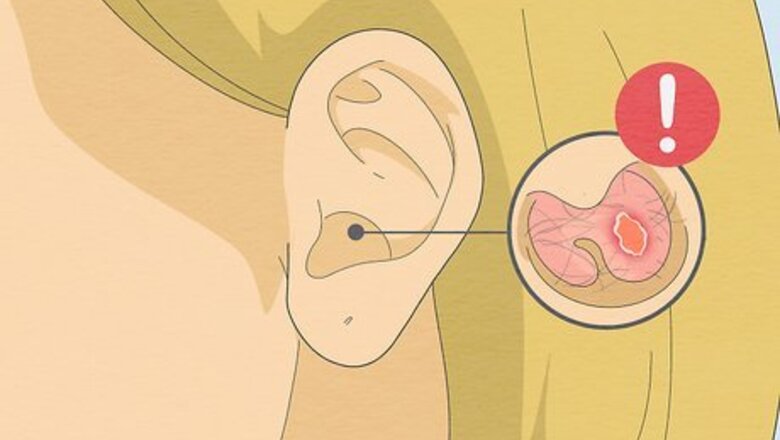
views
X
Trustworthy Source
Cleveland Clinic
Educational website from one of the world's leading hospitals
Go to source
There are many different ways to remove ear wax, but ear candling, which is sometimes called ear coning, is one of the oldest and most widespread practices around the world to get rid of excess wax. Although there is some controversy about its efficacy, some alternative health practitioners believe ear candling is a safe and effective way to maintain ear and overall health.
- Size the small end of the candle to your ear and wash your hands (and ear) before using it. Cover your head with a towel and sit upright to begin.
- Put a paper plate over your ear for protection, place the candle over your ear canal, and let it burn, trimming it periodically. Afterward, clean your ear.
- Alternatively, apply ear drops, use oil or glycerin drops, or irrigate and use wax plugs to remove wax from your ears.[2]
Using a Candle to Remove Wax
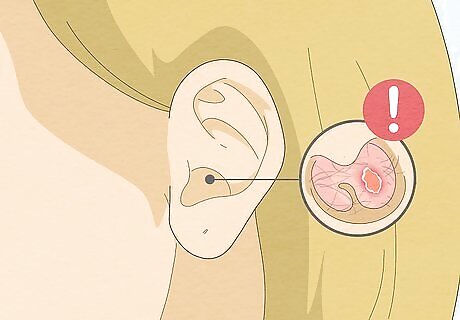
Be aware of the risks of ear candling. Alternative medicine practitioners are strong advocates for the benefits of ear candling, but many medical doctors believe that candling is ineffective and dangerous. Being aware of the risks and concerns about ear candling can help you make an informed decision if it is the best way for you to remove your ear wax. Studies by otolaryngologists (ear, nose and throat doctors) have shown that ear candling can cause burns, blockages in the ear canal, ear infections, and ear drum perforations even if you use the candle according to the packaging. Most medical doctors believe that ear candling is ineffective for removing wax.
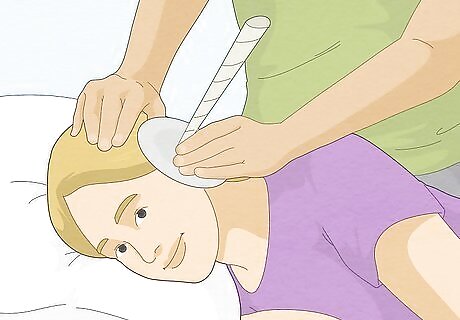
Have a friend or family member assist you. It can be difficult to perform ear candling by yourself. Have a friend or family member assist you during the process. This can help minimize the risk of burning yourself or causing other trauma to your ear.

Size the tapered, or small, end of the candle to your ear. The candle should be fitted to the size and contours of your ear. This can help ensure the most safe and effective candling process. Use the scissors to trim the end, making the opening slightly larger so it fills the ear canal. Make sure the opening is passable. There should be a clear pathway from one end of the candle to the other. If necessary, use a sharp, pointy object to remove any obstruction from the small end.
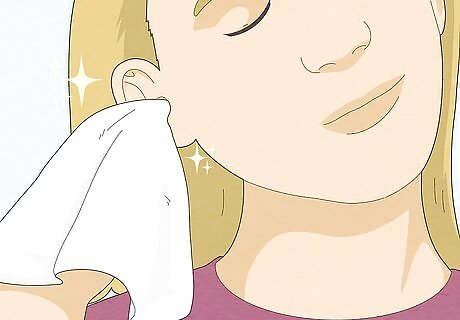
Wash your hands and your ear. Before you begin candling your ear, wash your hands and wipe off your ear. This can minimize the risk of spreading bacteria that may cause an infection. Use a soft soap that is antibacterial and antimicrobial. You can wash your hands with a simple and basic soap. You may want to use an soft soap that is antimicrobial and antibacterial. Wipe off your ear with a moist cloth.

Cover your head with a damp towel. Moisten a large towel with some water and cover your head and upper torso area. This can help prevent a flame or any ashes from hitting you during the candling process. Make sure to cover your head, hair, shoulders, and upper torso.
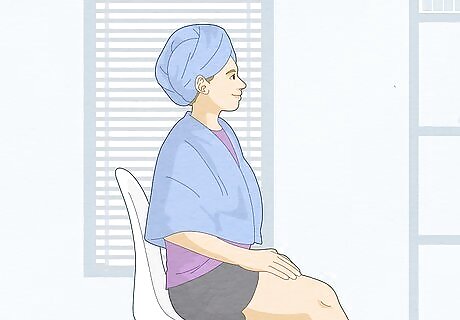
Sit upright for the candling process. It will be easier and safer for you to sit upright during the ear candling process. This can help ensure that falling ashes don’t contact or burn you. Be careful; if you do not do this correctly, you could burn yourself. Physicians often do not recommend using ear candles because of this risk.
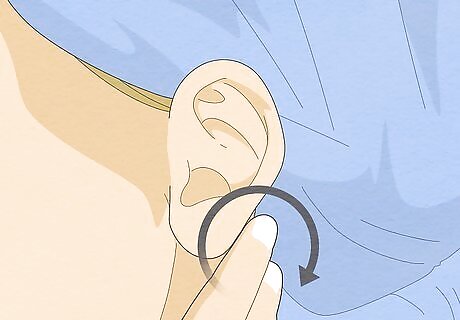
Rub the area behind your ear. Before you begin the candling procedure, massage the area around and behind your ear. This can help relax you and stimulate circulation in your ear area. Massage the area behind your jawbone, around your temple and your scalp. Rub for at least 30 seconds to open up the area around your ear.
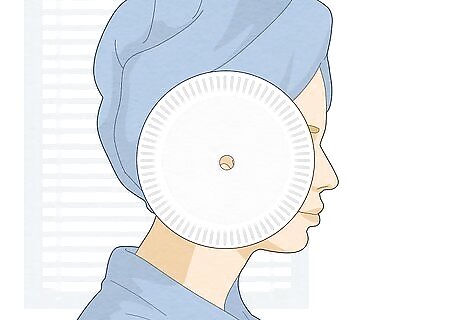
Put a paper plate or pie tin over your ear. Cut a small hole in either a paper plate or pie tin and place it over your ear. This can help ensure that you don’t get burned with the flame or falling ashes. Use any type of paper plate or pie tin, which you can buy at most grocery stores. Make sure the hole corresponds to the size of the end of the ear candle. Fit the candle into this hole and hold it up over the ear being cleaned.
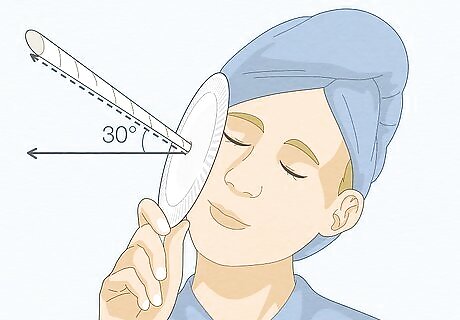
Position the tapered end of the candle in your ear canal. Place the small end of the candle in the paper plate or pie tin and then position the tip of the candle in your ear canal. This can help ensure a safe and effective candling procedure. Keep the candle in a vertically upright position. When sitting upright, the candle should be at an approximately 30 degree angle.
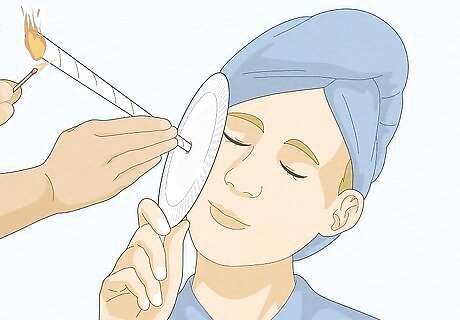
Light the large end of the candle. Have your assistant light the large end of the candle with a lighter or match. This will start the candling process and can help ensure that you safely light the candle without burning yourself. You will know if the candle is properly in place if no smoke escapes from between your ear and the small end of the candle. If you do not have a secure fit, readjust your position or the candle. It is important to get the secure fitting. If this takes a while, you may need to try again using a new candle.

Burn the candle for approximately fifteen minutes. It should take about 15 minutes for the candle to burn down to the desired length. This can help minimize the risk for burning and maximize the amount of wax you’re able to remove.
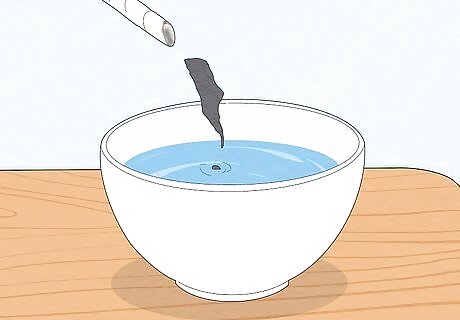
Trim the candle every two inches. As the candle burns, trim it into a bowl of water every couple of inches. This can keep ashes or flames from falling close to and burning you. You can remove the candle to trim it into the bowl of water. Simply replace it securely in the canal when you’re finished.
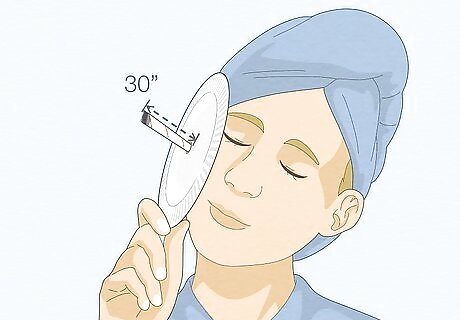
Allow the candle burn to within 3–4 inches (7.6–10.2 cm). After the candle has burned down so there is only about 3 inches (7.6 cm) remaining, ask your assistant to extinguish the candle in the bowl of water. This can minimize your risk for getting burned by the candle. If the burn takes a while, have your assistant check the small end's opening after a few minutes to make sure it is not obstructed. If necessary, use a toothpick to swiftly clear the opening and reinsert the candle in the ear.
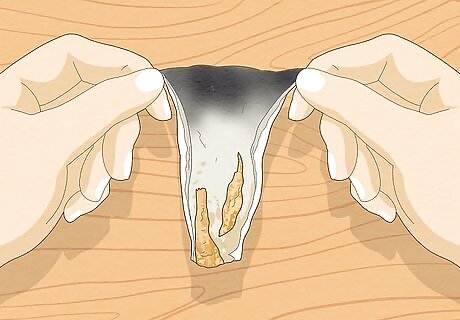
Observe debris on the candle stub. Once you’ve removed the candle stub from your ear canal, you may be able to observe a mixture of ear wax, debris, and bacteria on the stub. This may help you to assess if you removed the wax or need to repeat the candling procedure. If you put the candle into water immediately, you may not see any wax.

Clean the ear. Once you’ve finished the candling process, clean the outer area of your ear and ear canal. Be careful not to push any wax or remnants back down into the ear. You can use a cloth or cotton swab to clean the ear. Just make sure to not put a cotton swab all the way into your ear, which can push wax further into your ear or perforate your ear drum.
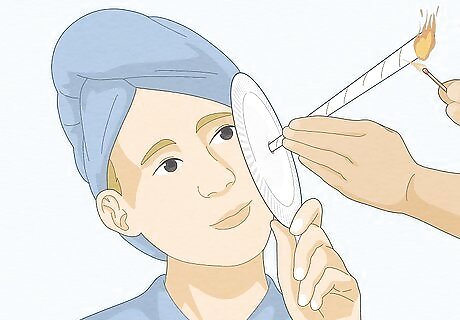
Repeat the ear candling on the other ear. If both of your ears have a wax buildup, repeat the process on your other ear. Be sure to follow the steps closely and according to the product packaging. This may prevent burning or other trauma in your ear.
Removing Ear Wax with Alternative Procedures
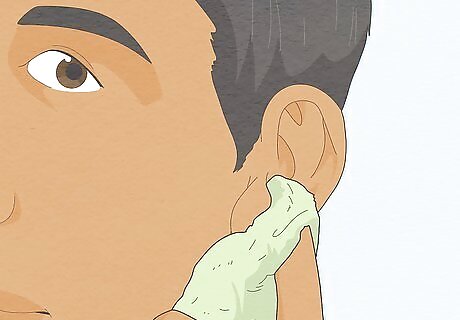
Wipe the outside of your ear. You can clean the outside of your ear canal with a cloth or paper tissue. This may help remove discharge or any wax that has worked its way outside of your inner ear. Use a soft cloth to wipe around the outside of your ear and on your outer ear canal. If you like, you can wet the cloth slightly with warm water. Wrap a paper tissue around your finger and gently wipe your outer ear and outer ear canal with the tissue.
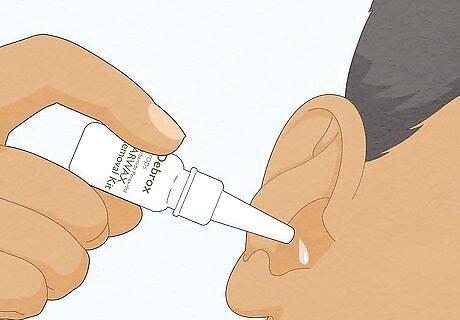
Apply an over the counter eardrops to remove wax. For those people with minimal to moderate amounts of earwax, use an over the counter wax removal preparation. This can help clear any impacted wax. Most over the counter drops are mineral oil and peroxide solutions. The hydrogen peroxide will not dissolve your wax, but help it move through the ear canal. When using hydrogen peroxide, lie on your bed with your head to its side and a towel placed under your head. Pour (or use a rubber bulb) a small amount of H2O2 into the ear. The ear will start to feel warm and you will begin to hear a bubbling sound. This is normal. Roll your ear over onto the towel to let the peroxide drain out. Repeat on other side. If you have any ear discharge consult a doctor immediately. Make sure to follow the package instructions for using the products to help ensure you don’t cause further problems. If you have an eardrum perforation or suspect that you may, do not use an over the counter preparation. The symptoms of a perforated eardrum include bloody or pus-filled discharge from your ear, hearing loss, or a ringing sound in your ear. You can purchase over the counter earwax removal drops at most pharmacies and some large retailers. Cerumenolytics (peroxide & mineral oil) can lead to complications including allergic reactions, otitis externa, transient hearing loss, and dizziness.
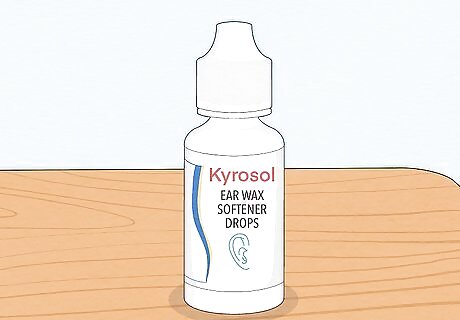
Try oil or glycerin drops to soften wax. In addition to over-the-counter wax treatments, you can also use simple household oils or glycerin drops to relieve wax plugs. These treatments soften ear wax, making it easier to clear out of your ear canal. You can use baby or mineral oils as a treatment. Place one drop of baby or mineral oil in each ear and let it sit for a few minutes before allowing it to drain out. You may also try olive oil. However, one study found that water was more effective at removing ear wax than olive oil. There are no studies about how often its helpful to use oil or glycerin drops, but no more than a few times a week should be fine.
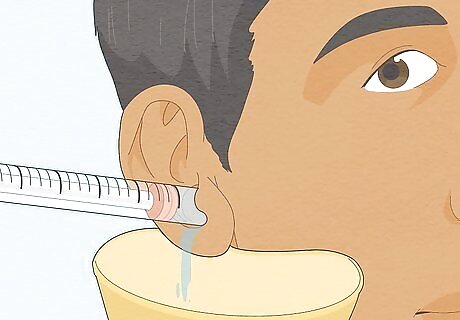
Irrigate wax plugs. Irrigating, sometimes called “syringing,” is one of the most common methods of removing wax plugs from the ears. Try washing your ear by irrigation if you have large amounts or stubborn ear wax. You’ll need a medical syringe to use this method, which you can buy at most pharmacies. Fill the syringe with body temperature water. Using cooler or warmer water may cause dizziness or vertigo. Hold your head upright and gently pull the outside of your ear upward to straighten your ear canal. Inject a small stream of water into your ear canal by where the wax plug is located. Tilt your head to drain the water.> You may need to perform an irrigation several times in order to clear away the impaction. One study showed that injecting a small amount of water or oil into your ear before irrigation may help remove the wax more quickly. Never use a water jet device designed for teeth to irrigate your ears!
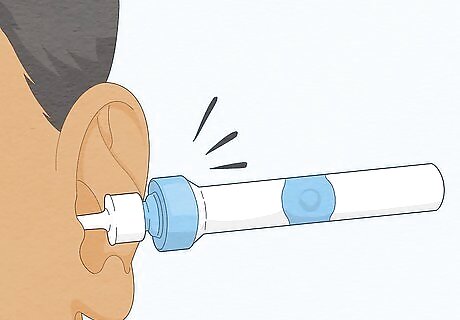
Vacuum your ear canals. You can purchase a suction device or vacuum to remove earwax. Although studies show that this treatment is ineffective, you may find it works for you. You can get earwax suction devices at many pharmacies or large retailers.
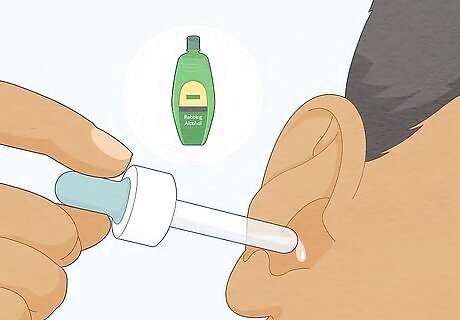
Dry out your ear. Once you’ve removed your ear wax, it’s important to dry your ear thoroughly. This can help ensure that you don’t get an infection or experience other problems. You can use a few drops of rubbing alcohol to dry out your ear. A hair dryer set to low can also help dry out your ear.
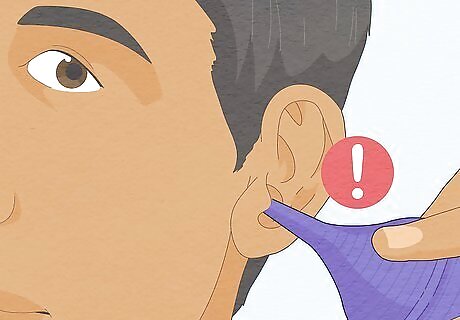
Avoid cleaning too often or with instruments. Understand that every person needs a certain amount of wax to help prevent ear infections. Avoid cleaning your ears too often or using instruments such as cotton swabs to help keep a healthy amount of wax in your ears. Only clean your ears as often as you feel they require it. If you notice you need to clean your ears daily or excess discharge, see your doctor. Using instruments such as cotton swabs or hair pins can force wax into your ear instead of removing it, and may cause infection or other problems. Using instruments can also perforate your ear drum and lead to infection or hearing loss.
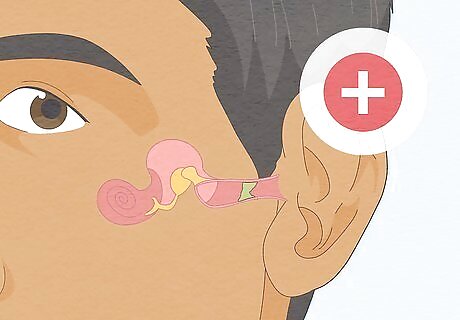
Talk to your doctor about professional treatment options. If you can’t remove your wax at home or experience other problems such as severe hearing loss, talk to your doctor about your different treatment options for wax plugs. This can help ensure that you get the most effective, least invasive, and most painless treatment for your impacted cerumen. Your doctor may recommend professional treatments or options that you can use at home, including drops and irrigation.










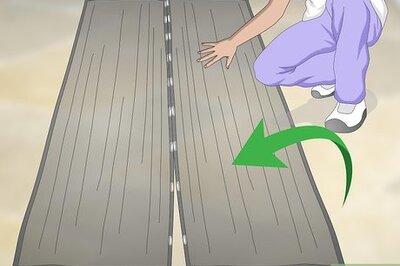









Comments
0 comment